Simply Media have announced the UK DVD release of 12 titles from MGM's 'Hollywood Classics' collection. All 12 discs will be released on 16th March 2015 and each will be priced at £12.99. All would appear to be movie-only discs, but there are some very interesting titles in here. As ever, Simply media have provided detailed information on each of the films, which we've reproced with only minor changes below.
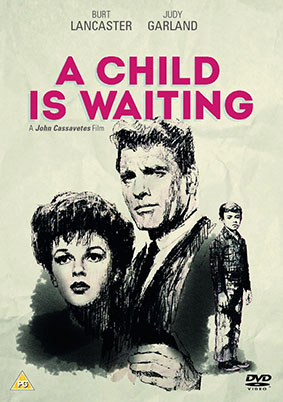
A Child is Waiting (1963)
As a psychologist, Dr Clark (Burt Lancaster) is the head of the Crawthorne State Training Institute, one of the first boarding schools exclusively for developmentally challenged children. Sympathetic but demanding when it comes to his teachers and students, the doctor’s tough love approach often causes controversy. When he meets gentle aspiring pianist Jean Hansen (Judy Garland), who has no background in nursing or teaching, he takes a chance and hires her as the school music teacher. Hansen immediately bonds with an autistic student named Rueben (Bruce Ritchey), whose parents have never visited in the two years of his enrolment. Dr Clark believes the way to handle this trauma is to treat Rueben no differently from other students, while Hansen believes the absence of parents means the child requires her undivided attention. Whose method will prevail?
A Child is Waiting was directed by the legendary John Cassavetes (Shadows, A Woman Under the Influence), who the New Yorker dubbed ‘the most influential American director of the last half century.’ Producer Stanley Kramer (Judgment at Nuremberg) modeled the film’s school on the Vineland Training School in New Jersey. Determined to bright the plight of mentally and/or emotionally disturbed children to a mass audience, he described his intentions as a desire to “throw a spotlight on a Dark Ages type of social thinking that has tried to relegate the subject of retardation to a place under the rocks.”
In line with this aspiration for authenticity, the children cast as the school’s students were not actors, but mentally challenged residents of the Pacific State Hospital in California. Burt Lancaster remembered working with the children fondly, saying, “they surprised us every day... they have certain gestures that are characteristic, very difficult even for an experienced actor.”
Stanley Kramer’s style clashed considerably with director John Cassavetes who, much to the leading actors’ dismay, was keen on improvisation, so much so that Cassavetes would later disown the picture, calling it Kramer’s film. It’s possible this also had something to do with the movie’s turnover – despite meeting great public and critical acclaim, the film lost $2million at the box office.
Before casting Judy Garland, Ingrid Bergman, Katharine Hepburn and Elizabeth Taylor were all lined up to play the role of Jean Hansen. Garland was experiencing severe personal issues at the time, and she has worked with many of the crew, including Kramer and Lancaster, who believed a supportive work environment would help her get through her difficulties.
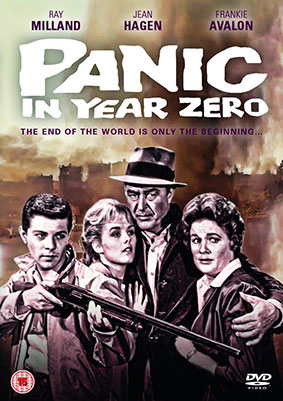
Panic in Year Zero! (1962)
The Baldwins are an average all-American family, leaving their Los Angeles home for an annual summer camping trip. They become anything but ordinary however, after they witness their home state disappearing completely beneath an enormous mushroom cloud. The fallout isn’t the biggest impact of the nuclear explosion. It’s the hordes of frightened and increasingly dangerous survivors that will prove to be the Baldwin’s biggest threat. This unpredictable and catastrophic chain of events will eventually lead the family to extreme acts of violence in their desperate plight to survive in a society torn apart.
Panic in Year Zero! was directed by its lead actor Ray Milland (Dial M for Murder, The Lost Weekend), and also stars Jean Hagen (Singin’ in the Rain) and Frankie Avalon (Casino, Grease).
Released at the height of the Cuban Missile Crisis panic across America, Panic in the Year Zero! was clearly set in a world defined by fear of the Cold War. Filmgoer anxieties had shifted by the sixties away from WWII and towards the Cold War and threat of nuclear strikes.
Director Ray Milland posed a simple question in this dark science fiction thriller – how would a civilised family react if they survived a nuclear war? One of the first post-apocalyptic survival movies, this effort offers a particularly bleak view of post war psychology as the Baldwin family are led by a father willing to procure survival essentials by any means necessary. The family, who start out as the American ideal, soon find themselves wrapped up in the seedy world of petty theft, violence, rape and murder as their outlook on civilisation becomes increasingly grim.
With a haunting soundtrack from Les Baxter, using jazz instruments to invoke a sense of overpowering madness and corruption, Panic in the Year Zero! takes a dark look at the fragility of civilisation, and the seething madness that waits within.
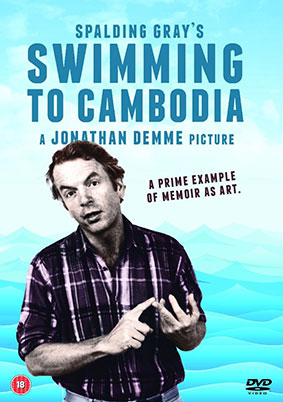
Swimming to Cambodia (1987)
Originally a piece for theatre, Spalding Gray worked on his monologue for over two years and would perform for a total of four hours, over two nights in theatres across the US. Utilising powerful minimalism, Swimming to Cambodia is a prime example of memoir as art.
The primary subject of this epic soliloquy is Gray’s experience of filming The Killing Fields. His role as the US Ambassador’s aide was a small one, and his consequent free time in Cambodia was thus filled with educating himself on the horrors of the country’s history. Gray offers the audience, equipped with only a glass of water, pointing stick and two maps, a background to the events occurring in Cambodia at the time in which The Killing Fields is set. Disgusted by what he learnt, Gray protests, ‘who needs metaphors for hell or poetry about hell? This really happened, here on earth.’
Beginning by recounting his audition for The Killing Fields, before progressing through to discussion of genocide and numerous other Cambodian atrocities that occurred in the time the film was set, this monologue is a veritable one-man odyssey. Unafraid of drama, Spalding Gray lights up the screen, waving his arms above his head and flashing his eyes one minute, before sitting in calm reverie the next. This soliloquy is at once political and personal, scary and hilarious, bold and contemplative. A powerful exercise in minimalism, this deeply moving experimental film works beautifully due to the entirely engrossing performance of Gray, and respectful, subtle direction from John Demme (Silence of the Lambs, Philadelphia).
Spalding Gray’s life was to have a tragic end. On 7th March 2004 his body was discovered in the East River in New York. The intensity of the monologue on which he was working at the time of his death, covering his near fatal car crash and long attempt to recover from his injuries, is suspected to have triggered a relapse in his depression. Swimming to Cambodia now has the well-deserved status of a cult classic and continues to be adored by audiences worldwide nearly 30 years after its release.
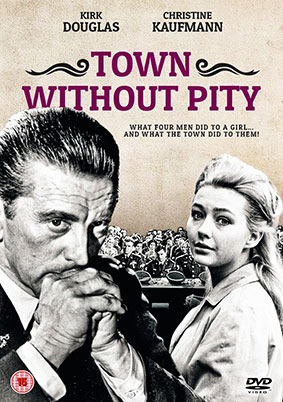
Town Without Pity (1961)
Kirk Douglas (Paths of Glory, Spartacus) stars as Major Steve Garrett, an Army lawyer in 1960s Germany assigned to defend four American soldiers, charged with raping 16-year-old Karin (Christine Kaufmann) whilst stationed abroad. Major Garrett abhors his clients, but against his own wishes must do his job and give them the best defence possible. Despite Garrett’s attempts to obtain a plea bargain, Karin’s father is seeking the death penalty. It soon becomes clear that the town folk are more obsessed with revenge than concerned for the well being of the victim, and Karin struggles to cope with the pressures of the courtroom...
This gripping, and controversial thriller was nominated for an Oscar for the original song A Town Without Pity, composed by Dimitri Tiomkin (It’s a Wonderful Life, The Guns of Navarone). It missed out to Moon River from the far more financially successful, Breakfast at Tiffany’s.
The intense subject matter of Town Without Pity, and the explicitly sexual nature of its content meant it never received contemporary mainstream success. To tackle a topic so taboo as rape was a bold move, especially for actor Kirk Douglas who had met broad critical acclaim in his previous film, Spartacus. Made between Spartacus and The Last Sunset, Town Without Pity will be of particular interest to fans of Douglas, as it was an unexpected and unusual direction for a Hollywood favourite to take.
Christine Kaufmann, who made her English language film debut in this film, was described by Variety as ‘a rare combination of sensual beauty and sensitivity, [she] handles her assignment – the victim – with sincerity and animation.’ Kaufmann would go on to star in Taras Bulba (1962), where she would meet her future husband, Tony Curtis. The pair were married until 1967 following many problems, including her affair with Warren Beatty.
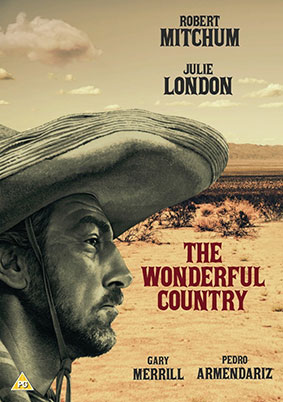
The Wonderful Country (1959)
Often considered one of Robert Mitchum’s best and most overlooked performances, the legendary actor stars as Martin Brady, a hired gun man who fled to Mexico as a child having killed his father’s murderer.
En route to Texas to broker an arms deal for his boss Governor Castro, Brady falls from his beloved horse Lágrimas, and breaks his leg. While he recuperates in Texas, Brady’s arms shipment is stolen and to complicate matters further, he begins to fall for the wife of a local army major, played by Julie London...
Directed by Robert Parrish (Casino Royale), this melancholy Western draws a colourful portrait of a fading way of life.
Adapted from the Tom Lea novel of the same name, the only money the author and artist received from the film was for his brief cameo as Robert Mitchum’s barber. In a biography of Mitchum, Robert Mitchum: Baby I Don’t Care, Lea said ‘I decided to make that my last experience with Hollywood. The hell with this! I thought. But I got to like Mitchum. And Bob Parrish was a fine man.’
Much of Lea’s time on set was in fact spent drawing Mitchum who, after Henry Fonda and Gregory Peck refused the role, not only took the lead part but also got on board as executive producer. Julie London complained in interviews following the release of the movie that; ‘all my lovely big screen shots were gone – every last one of them. Instead, all the close ups seemed to be those of Bob Mitchum.’ Despite this, speaking to the Milwaukee Journal, she described her time on the picture as ‘one of the best times I ever had in my life.’
Mitchum was center of attention both on and offset. The cast became fond of playing practical jokes on one another during production, usually at Mitchum’s expense. During a bathing scene, the bucket of lukewarm water to be poured over his naked body was replaced with a bucket of ice water, much to his costars amusement – perhaps it could be argued that Robert Mitchum was the first Hollywood participant in the ice bucket challenge!
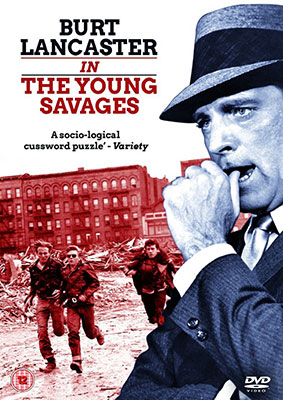
The Young Savages (1961)
Following their arrest, it becomes clear that the boys are members of the Italian-American gang, ‘The Thunderbirds’, and their victim the leader of their rivals, the Puerto Rican-American ‘The Horsemen’. District Attorney Hank Bell (Burt Lancaster) must prosecute the boys, and he knows better than anyone the dangers of the racially charged wars of the Harlem communities. Despite accusing the boys of first-degree murder, including the young son of his former girlfriend, Hank is torn; is it inhumane to so seriously convict those so young? Anxious for answers, Bell takes the investigation into his own hands, placing his life, and those of his family, in increasing danger...
On day one of filming The Young Savages, Burt Lancaster was shocked to walk onto set and find a camera pointing up at him from the floor. Lancaster had never before worked with a director who used such innovative angles, and this marked the start of a partnership with John Frankenheimer that would see the pair make four more films, including the Oscar nominated Birdman of Alcatraz.
Not everything about the film was new for Lancaster however. The neighborhood in which he grew up, East Harlem in New York, was one of the principal locations for filming, giving an added resonance to his character’s relationship to the district. Furthermore, costar Shelley Winters, who played his character’s ex-girlfriend, was ironically his former lover in real life and the set of The Young Savages was the first time they had seen one another since breaking off their romance. In her autobiography Shelly II: The Middle of My Century, Winters described a particularly volatile moment during shooting. ‘Suddenly we weren’t acting anymore. We both began to break from the dialogue and call each other terrible names...a security guard heard us a block away and came running with his gun drawn...I didn’t know what Burt and I had been screaming about – was it the scene...or were we blaming each other for what had gone wrong in our lives in the last decades?’
Later in the memoir, Winters recalls Sydney Pollack standing between herself and Lancaster to avoid their verbal altercations turning violent. Pollack was on set as Frankenheimer’s personal friend, hired to coach the nonprofessional street gang members with their dialogue; the film proved to be a turning point for his career. Burt Lancaster recognized that Pollack had talent, and recommended him to the head of the MCA Lew Wasserman, thanks to whom he would receive his first directional credits.
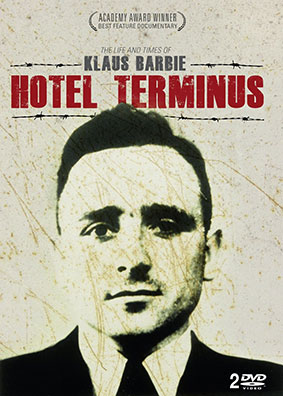
Hotel Terminus – The Life and Times of Klaus Barbie (1988)
Klaus Barbie, also known as the ‘butcher of Lyon’ was implicated in 4,000 deaths and the deportation of 7,000 Jews from occupied France, before he inexplicably vanished. This Oscar winning documentary, from visionary director Marcel Ophüls, traces the 40-year hunt for Barbie, initiated by the same governments that would later hide him and protect his family.
Employed by the American government as an informant, Barbie was smuggled out of Europe via an underground railway with Vatican ties – known as ‘the rat line’. He found refuge in South America where his particular ‘talents’ were employed by governments in Bolivia and Peru. Until his trial in 1987, authorities harboured Barbie at the same time as denouncing his crimes.
This spellbinding documentary features interviews with both supporters and opponents of Barbie’s trial, from his defence attorney to journalists, to old friends and former US Counter Intelligence agents. The film spans 70 years, three continents and 120 hours of interview footage.
Hotel Terminus clocks in at 4 1⁄2 hours, and uses every one of those minutes to tremendous, resonant effect. The 120 hours of interview footage edited into this mesmerizing documentary features some chilling and maddening footage including a gardener’s memory of witnessing Barbie leading a group of children to certain death. Amongst other subjects is Simone Lagrange, the sole survivor of one of Barbie’s orders to arrest, deport and murder a group of Jewish orphaned children from a farm in Izieu.
A more personal film than The Sorrow and the Pity, Ophüls places himself more in the frame of interviewer/interrogator than in his previous films. His frustrations and anger at Barbie’s atrocities and the exemptions he was granted by government officials are palpable and colour the documentary, making the political personal and the personal political. The decision not to include Holocaust footage was deliberate, as Ophüls felt audiences had become too used to gruesome images of that nature, letting the horrors of Barbie’s legacy speak for themselves.
Dark irony creeps into Ophlüs’ narrative voice, as he captures several interviewees condoning Barbie whilst sat before Christmas trees and in one instance he zooms into the angel atop the tree, in a moment of bitter humour. The fascinating series of contradictory interviews tell the story of a well-liked child who mutated into a cruel, brutal man, never afraid to use torture to get what he wanted.
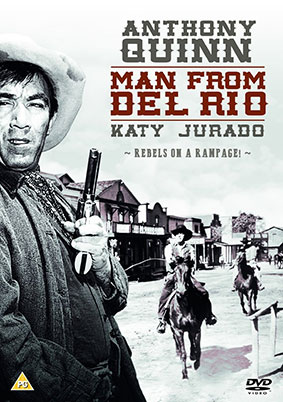
Man From Del Rio (1956)
Two times Oscar winner Anthony Quinn (Lawrence of Arabia) stars as Dave Robles, a Mexican gunfighter who outdraws an old rival. Upon discovering that his enemy had redeemed himself and become a sheriff, Robles must pay for his mistake and fill the dead man’s not yet cold shoes. Robles soon discovers that his tin star doesn’t win automatic respect from the locals. He is shunned by the town’s elders. When he starts to take his job seriously, his popularity amongst the community at large nosedives too. Could his love for Esmeralda (Katy Jurado – Pat Garrett & Billy the Kid) be what keeps him in town? Will she ever succeed in convincing him to lay down his gun and start a new life with her?
From multi Oscar winning director Harry Horner comes this action packed Western romance that sensitively deals with undertones of racial prejudice amidst classic gun slinging action. Also starring Douglas Fowley (Singin’ in the Rain) and Whit Bissell (The Time Machine, The Magnificent Seven).
Unusually for Hollywood the star crossed Mexican lovers of this thrilling Western romance were actually played by Mexican actors, Anthony Quinn and Katy Jurado, and American racial prejudices are subtly challenged in the course of the film. This was clearly an issue close to Quinn’s heart as when asked about his ethnicity in an interview, he responded ‘It doesn’t make a difference, as long as I’m a person in the world.’
Katy Jurado who plays Esmeralda, Quinn’s resolutely anti-gun love interest, was the first Latin American actress to be nominated for an Oscar, and the first to win a Golden Globe. When Jurado started acting, she couldn’t speak English and so impressively learnt her lines phonetically! Mexican director Arturo Ripstein once said, ‘Katy Jurado’s...like Anna Magnani, but flavored tequila and lemon’ and when Carol Reed directed her in Trapeze he quipped ‘the actors were more trouble than the animals’! Jurado and Quinn had lives as volatile and passionate off the screen as they did on it.
Jurado had a host of famous lovers over her life, including John Wayne, Tyrone Power and Marlon Brando whilst Quinn fathered 13 children and combined his acting with a passion for painting and sculpting. This dynamic duo, who so lit up the screen in Man From Del Rio went on to star in many more films together including the biblical epic Barabbas and I Briganti Italani, and became life long friends.
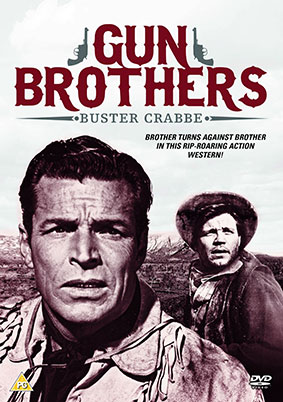
Gun Brothers (1956)
Cowboy Chad Santee leaves the cavalry in order to join his affluent brother, Jubal (Neville Brand – Stalag 17), who supposedly owns a large cattle ranch in Wyoming. On his way he encounters the beautiful Rose Fargo and after rescuing her from the unwanted advances of ‘Blackjack’, a hardened gambler, wins her heart. When the pair arrives, Chad is dismayed to discover that Jubal and his partner Shawnee are actually outlaws making their fortune by rustling cattle. Jubal is thrilled to see his brother and tries to persuade him to join his gang, but Chad refuses to break the law and leaves to set up his own homestead with Rose by his side. Jubal’s loyalty to his brother sets off a chain of events that will lead to both brothers being attacked. Who will survive? And how will two lone cowboys face the wrath of an entire gang of hardened outlaws?
Edward Small’s company Grand Productions produced Gun Brothers and he was also responsible for The Count of Monte Cristo and The Man in the Iron Mask. Such was the popularity of this film in Hollywood, that it was remade scene for scene in 1961 as Gun Fight starring James Brown and Gregg Palmer. Flash Gordon himself, Buster Crabbe, stars in this action packed family-ties Western, his first feature film in six years. Acting wasn’t Crabbe’s only talent; he won the Olympic Gold medal for 400m freestyle swimming in 1932 and held 16 world records before abandoning his plans to become a swimmer and lawyer to instead break into acting.
War of the Worlds star Ann Robinson plays Rose, the no nonsense love interest who wins Crabbe’s heart. Robinson started out in Hollywood as a horse-riding stunt double, and so the Western genre seemed to be her destiny since her first film debuts. The horse riding skills that won her career are shown off to breath-taking effect in Gun Brothers. The film also features an early appearance from Western favourite Slim Pickens.

Hawaii (1966)
Based on the acclaimed James Michener novel and filmed on location in Hawaii, this epic blockbuster spans two oceans, three continents, was seven years in the making and received as many Oscar nominations.
Max von Sydow stars as Abner Hale, a domineering minister who settles in Hawaii with his wife Jerusha (Julie Andrews) as a missionary. Abner expects the islanders to adjust themselves to him, while Jerusha goes out of her way to understand and appreciate her new neighbours and their culture. Tiring of her husband’s overbearing attitudes, she seeks comfort in the arms of her former lover, whaler Rafer Hoxworth (Richard Harris). Despite the idyllic surroundings, the clash of cultures eventually proves too great for either side...
From George Roy Hill, director of Butch Cassidy and the Sundance Kid, The Sting, Slaughterhouse Five and Thoroughly Modern Millie, Hawaii also stars Gene Hackman, Carroll O’Connor and Michael Constantine. Look out for a break through appearance from Bette Midler as a seasick member of the congregation.
It took seven years to translate the epic Hawaii from James Michener’s novel to the big screen, and just as long to make back the incredible $15million dollar cost of shooting. The tide of Hawaii turned several times during production, starting with the original director Fred Zinneman, who had already spent years on the project, and was replaced by George Roy Hill before shooting even began. Richard Harris’s role was originally intended for Charlton Heston, who would eventually star in the 1970 sequel, The Hawaiians. Audrey Hepburn and Alec Guinness were scheduled in for the lead roles and the script also changed hands countless times before eventually settling with writers Dalton Trumbo (Spartacus, Roman Holiday) and Daniel Taradash (From Here to Eternity).
The fictional character of Malama in the novel and movie was based on Queen Ka’ahumanu, the actual ruler of Maui at the time of the missionaries’ arrival on the islands. Actress Jocelyn LaGarde was a native Tahitian and as such didn’t speak English – a vocal coach had to be hired to help her learn her lines phonetically. LaGarde is the only actor in Academy Award history to be nominated for the only performance they ever gave; this was her first and last film. LaGarde apparently bore a strong resemblance to the real Queen in all but one respect – Ka’ahumanu was heavily tattooed. Hawaii is also responsible for launching the career of Bette Midler, who can be seen playing a seasick passenger aboard a ship listening to the preacher played by Max von Sydow. She used her earnings from the film to move to New York where her career took off.

He Walked By Night (1948)
In Post-WWII Los Angeles, a police officer is shot dead in the middle of the night. With no evidence, Sgt Chuck Jones and Sgt Marty Brennan are sent to investigate the murder and apprehend the man who killed one of their own. They soon discover that the murderer has been selling stolen equipment through an electronics dealer, and decide this is their moment to set a trap.
The murderer has no criminal past and the edge over the LAPD as he listens in to police calls on his custom radio, from the Hollywood bungalow he shares with his small dog. Knowing just minor details about the man’s appearance and habits from a select group of witnesses, the partners begin their tireless hunt for the dangerous and resourceful villain.
This documentary-style Crime Noir was loosely based on real newspaper accounts of Erwin ‘Machine-Gun’ Walker, a WWII veteran who unleashed a crime spree of burglaries, robberies and shootouts in LA during 1945 and 1946. Alfred Werker and Anthony Mann directed the film, starring Scott Brady, Richard Baseheart, Roy Roberts, Whit Bissell and Jack Webbe, whose influential franchise Dragnet was inspired by his work on He Walked by Night.
Captured beautifully by noted Oscar winning Noir cinematographer John Alton (An American in Paris, T-Men, The Amazing Mr. X), He Walked by Night is an exquisite example of Film Noir. Particularly notable is the film’s influence on later works, particularly how formative it was for the police procedural drama genre.
Whilst working on the film, actor Jack Webb struck up a friendship with the police technical advisor, Sgt Marty Wynn, which would later inspire his incredibly influential radio and television franchise Dragnet. Connections can also be seen between He Walked by Night and later classic Noir films. The final scene, which follows a chase through the sewers of LA, bears a strong resemblance to the final scene of The Third Man in which Orson Welles is pursued through the sewers of Vienna for example.
He Walked by Night was in fact the first film to use the city’s sewers as a backdrop; the same setting was later utilised for the equally disturbing film Them! in which the sewer is inhabited by giant flesh eating ants! Though Alfred Werker is credited as director of the film, experts agree that the Anthony Mann was the real genius behind it, and his signature stylization is evident in each dramatic scene.

How to Succeed in Business Without Really Trying (1967)
Young New Yorker J. Pierpont Finch (Robert Morse) abandons his job as a window washer after impulsively picking up the book How to Succeed in Business Without Really Trying and deciding to take on the corporate world. The book promises readers that they can climb the ladder quickly and simply, and as it turns out, The Worldwide Wicket Corporation, whose windows Finch has been washing, would be the perfect type of business.
Once inside the company, Finch meets secretary Rosemary Pilkington (Michele Lee) who sees him as an unassuming man who’ll be eaten alive by the corporate world. Following the book’s advice however, Finch begins to work his way through the ranks, rising to vice President in next to no time. Is he really on the way to the top, or on the brink of tumbling back down?
From family favourite director David Swift (The Parent Trap, Pollyanna) comes what Time Out described as ‘one of the liveliest musicals of the ‘60s’. How to Succeed in Business Without Really Trying was one of only eight musicals to ever win the Pulitzer Prize for drama, alongside titles including South Pacific and Rent.
How to Succeed in Business Without Really Trying was based on the hit Broadway musical of the same name, which in turn was based on the Shepherd Mead novel. The original book had no plot, and was simply written as a satire of a typical ‘how to’ manual. Inspired by his corporate experiences, Mead wrote the book in his spare time before work and during weekends.
The original Broadway production ran for 1417 performances and won the 1962 Tony Award for Best Musical and Best Score, with Robert Morse winning Best Actor before going on to reprise his role for the film version. Revived on Broadway in 2011 with Daniel Radcliffe, Nick Jonas and Darren Criss all having starred in the title role, what better time to watch the original version adapted in all its glory for the big screen? The film’s production is as soaked in colourful camp as the musical itself. The scene in which Finch (Robert Morse) dances down the street on his way to work, for example, was filmed with hidden cameras, meaning all the bemused passer-by reactions were genuine, and not performed by extras. This is a warm hearted, fun satire on office life. |